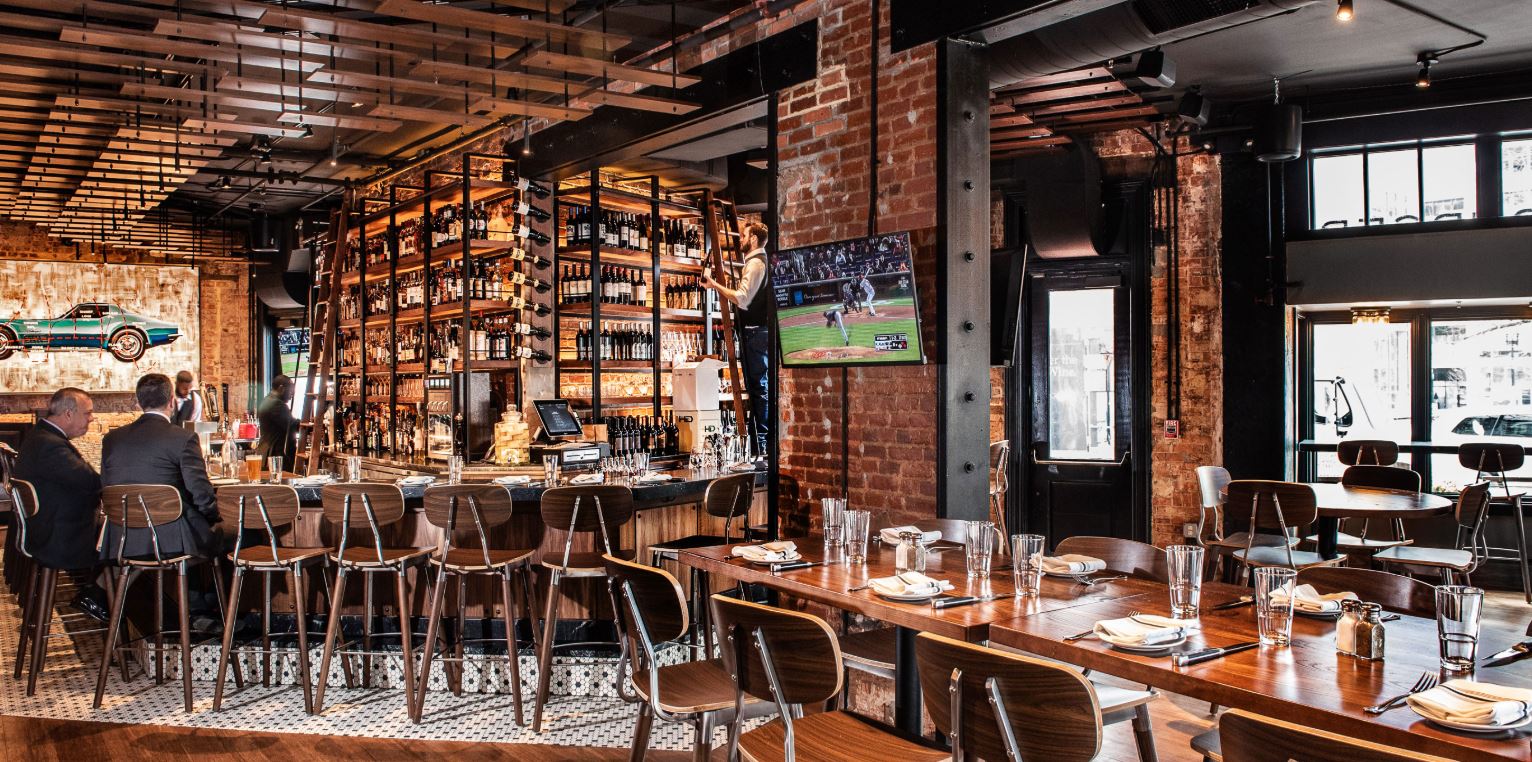Savor Genuine Oriental Cuisine With a Pan-Asian Twist for a Culinary Adventure
Embarking on a culinary journey via genuine Eastern food, improved with a Pan-Asian twist, offers a special opportunity to discover the abundant tapestry of tastes that define the area's varied culinary practices. As you consider these attracting dishes, think about the cultural stories and historical influences that form them, each bite using a tale waiting to be found. Fine dining experience Islamabad.

Exploring Pan-Asian Flavors
In the world of global gastronomy, Pan-Asian cuisine stands apart for its amazing diversity and the unified interaction of tastes from various Oriental cultures. This cooking technique commemorates the special ingredients and rich traditions located throughout the continent, developing a tapestry of preferences that is both intriguing and enjoyable. Key to Pan-Asian cuisine is its ability to stabilize contrasting tastes-- sweet, salty, spicy, and sour-- while highlighting the quality and top quality of each active ingredient.
From the umami-rich soy sauce of Japan to the intense chili peppers of Thailand, Pan-Asian cuisine provides an extensive combination of tastes. These components are usually combined in innovative ways, enhancing meals with layers of complexity. For circumstances, making use of aromatic herbs such as lemongrass and cilantro, typical in Vietnamese and Thai cuisine, includes a revitalizing illumination to dishes, while the unification of coconut milk supplies a creamy, rich appearance.
The emphasis on fresh fruit and vegetables and aromatic seasonings ensures that each dish is not just a feast for the preference buds but additionally for the senses. Pan-Asian cuisine invites diners to get started on a culinary trip, checking out the vast and differed landscapes of Oriental gastronomy with every bite.
Blend Recipes to Try
While Pan-Asian cuisine is celebrated for its typical flavors, the modern culinary landscape is increasingly accepting blend recipes that blend these classic components with influences from various other regions. This ingenious strategy not just honors the rich heritage of Eastern culinary arts but additionally presents novel preference experiences that interest contemporary tastes buds.
A prime example of such a blend dish is the Korean-Mexican taco, where marinaded bulgogi beef is covered in a warm tortilla, covered with kimchi and a hot gochujang-infused salsa. This combination weds the bold, savory flavors of Korea with the vibrant, fresh elements of Mexican cuisine. Similarly, sushi burritos have gotten appeal, integrating the delicate creativity of Japanese sushi with the passionate, hand-held benefit of a burrito, typically featuring fusion ingredients like tempura shrimp and avocado with a drizzle of wasabi mayo.
Another noteworthy recipe is Thai curry ramen, which instills the velvety, aromatic spices of Thai curry into the comforting broth of typical Japanese ramen, creating an unified blend that tantalizes the senses. These blend meals extend beyond plain uniqueness; they stand for a culinary dialogue in between societies, urging exploration and development on the planet of Pan-Asian food.
Essential Ingredients and Spices
To genuinely value Pan-Asian food, one need to understand the essential active ingredients and flavors that form its foundation. This varied culinary style draws from an abundant tapestry of Eastern customs, utilizing an unified blend of structures and flavors.
Fragrant elements are crucial, with garlic, ginger, and lemongrass being common across different Pan-Asian recipes. These active ingredients provide an aromatic base that improves the intricacy of flavors. Seasonings such as star anise, cardamom, and cinnamon introduce heat and character, resembling influences from areas like China and India.

Food Preparation Methods and Tips
Grasping the art of Pan-Asian cuisine calls for experience with its unique food preparation techniques, each adding to the dynamic tapestry of flavors this culinary custom is celebrated for. Central to these methods is the stir-fry, a rapid food preparation method that protects the nutritional honesty and this page vivid colors of ingredients. Using a wok, the stir-fry approach enables for even heat circulation, necessary for attaining the here characteristic texture and taste balance of Pan-Asian dishes.
Another fundamental technique is steaming, especially prevalent in Chinese cuisine. This mild technique keeps the natural flavors and nutrients of active ingredients, making it perfect for fish and shellfish and veggies. Dumplings, a cherished staple, frequently take advantage of steaming, resulting in soft, succulent appearances.
Grilling, likewise essential, gives smoky midsts to meals such as Korean bulgogi or Japanese yakitori (best asian restaurant Islamabad). This strategy frequently entails seasoning components, permitting tastes to penetrate deeply before cooking over an open fire or warmer
Lastly, understanding the art of balancing tastes-- wonderful, sour, salty, bitter, and umami-- is vital. Appropriately layering these elements can raise a meal from regular to amazing, using a facility and satisfying cooking experience that embodies the significance of Pan-Asian cuisine.
Eating Experiences Worldwide
Across the globe, Pan-Asian cuisine uses an exceptional eating experience, commemorated for its rich tapestry of tastes and lively presentations. This culinary phenomenon has gone beyond cultural boundaries, catching the hearts and palates of food enthusiasts worldwide. In multicultural cities like New York, London, and Sydney, Pan-Asian dining establishments function as fusions where cooking traditions from Thailand, Japan, China, and beyond merge, giving diners with a diverse mix of dishes that highlight the region's variety.
The global allure of Pan-Asian food lies in its ability to offer both authenticity and development. Cooks masterfully marry standard components such as lemongrass, soy sauce, and miso with contemporary methods, resulting in dishes that are both familiar and refreshingly brand-new. This blend enables restaurants to embark on a cooking journey that values heritage while embracing modernity.
Furthermore, dining experiences are raised with more tips here attentively designed environments that mirror the ethos of Pan-Asian aesthetics. From minimal Japanese-inspired interiors to dynamic Thai-themed spaces, each restaurant offers a distinct atmosphere that enhances the culinary offerings. Consequently, patrons are not just eating a meal however partaking in a social experience, making Pan-Asian eating a really global phenomenon.
Final Thought
The exploration of Pan-Asian food uses a profound understanding of the complex interaction of flavors and culinary customs across Asia. By embracing combination meals such as Thai curry ramen and sushi burritos, the culinary trip not only highlights the flexibility of traditional ingredients yet additionally showcases innovative modern strategies. This gastronomic adventure, improved by crucial flavors and cooking approaches, gives an one-of-a-kind opportunity to value the social variety and cooking artistry that specify Pan-Asian food on a worldwide scale.
Getting started on a cooking journey with authentic Eastern cuisine, improved with a Pan-Asian spin, provides an unique chance to explore the rich tapestry of flavors that specify the area's diverse cooking customs.In the world of worldwide gastronomy, Pan-Asian food stands out for its remarkable diversity and the harmonious interaction of flavors from different Oriental societies. Secret to Pan-Asian cuisine is its capacity to balance different tastes-- pleasant, salted, spicy, and sour-- while highlighting the quality and quality of each active ingredient.

Comments on “Pan Asian Restaurant Islamabad: Discover Exquisite Asian Food”